If you’ve ever stepped outside on a spring morning and caught that soft, nostalgic scent of lilacs on the breeze… you know. Lilacs aren’t just flowers—they’re memories. They remind us of grandparents’ gardens, warm spring days, and slowing down to take in something beautiful. Here’s how to grow French garden lilacs.
Whether you’re growing your own, buying a bundle at the market, or sneaking a few stems from your neighbour’s overgrown hedge (no judgment), this post is your go-to guide for all things lilacs: how to grow them, the best varieties to look for, and how to keep them fresh in a vase for as long as possible.
Why We Love Lilacs
Lilacs (Syringa) are deciduous shrubs known for their fragrant, trumpet-shaped blooms that typically flower in late spring. They’re hardy, classic, and impossibly charming in a very French countryside way—plus, they make one of the most stunning (and sweet-smelling) cut flowers to bring indoors (more on that below – they are tricky to keep perky once cut but I have some hacks).
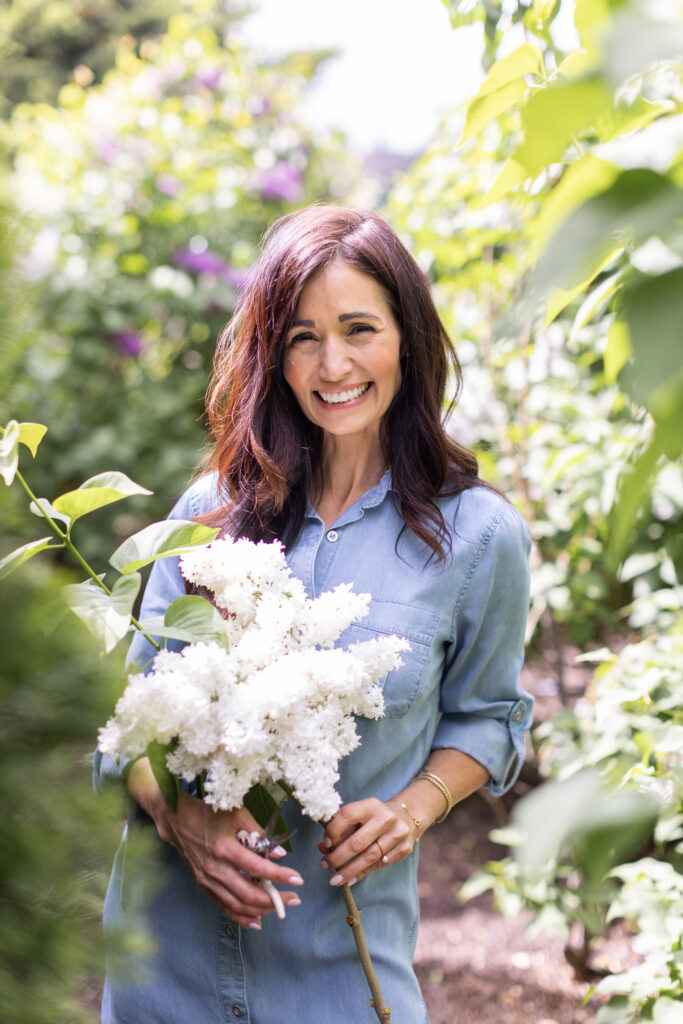
How to Grow French Garden Lilacs
Lilacs are surprisingly low-maintenance once established, making them a great addition to any garden—even if you don’t consider yourself a “green thumb.” They come back year after year, stronger and more beautiful than ever.
1. Choose the Right Spot
Lilacs love full sun—they need at least 6 hours a day to bloom their best. They also prefer well-draining soil, so avoid soggy areas where water tends to pool.
2. Give Them Space
Depending on the variety, lilacs can grow 6 to 15 feet tall and just as wide. Choose a location with room to spread out (and that can handle a big visual impact). We placed ours between our cedars (tall) and Incrediball hydrangeas (medium height) followed by a border of boxwoods for that French garden layered look.
3. Planting Tips
- Plant in spring or fall
- Dig a hole twice as wide as the root ball
- Mix compost into the soil to encourage healthy growth
- Water well after planting, and mulch around the base to keep weeds down
4. Pruning for Better Blooms
Prune right after blooming, before the buds for next year start forming. Cut off dead or damaged wood, and remove any suckers at the base to encourage airflow and prevent mildew.

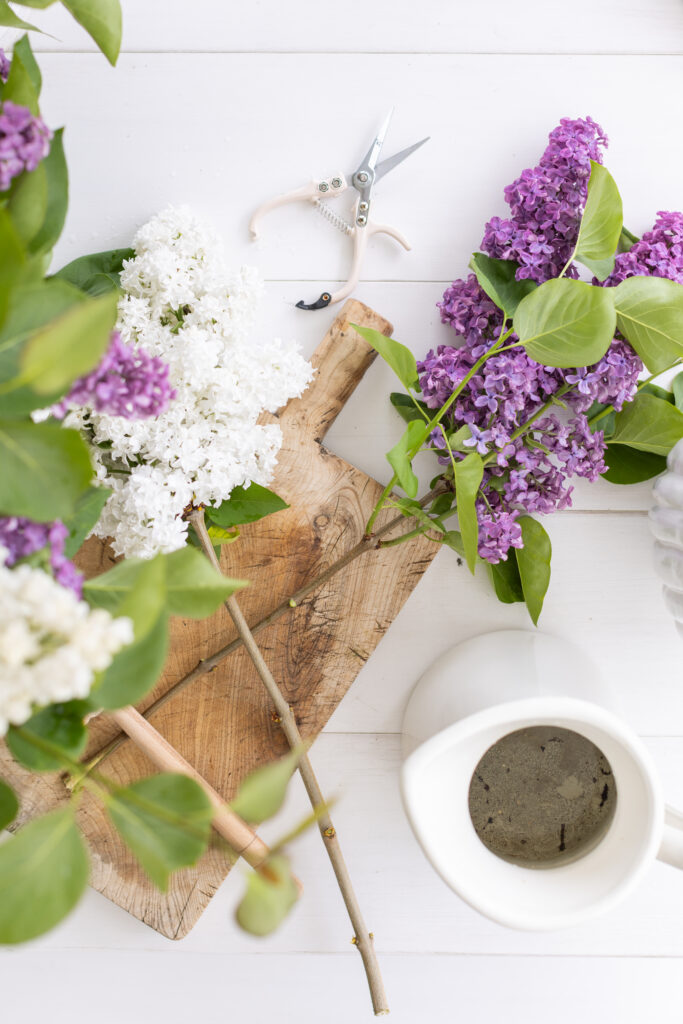
Popular Lilac Varieties
There are dozens of varieties of lilacs, each with its own size, color, and bloom time. Here are a few of my favourites:
Common Lilac (Syringa vulgaris)
- The classic variety with light purple blooms and that iconic scent. These bloom first in my garden.
- Grows 10–15 feet tall
- Blooms mid to late spring
Syringa vulgaris ‘Charles Joly’
- Bloom Color: Deep reddish-purple to magenta, often described as rich wine-purple. I have these – my favourite.
- Bloom Type: Double flowers (two layers of petals), which makes the blooms extra full and lush.
- Fragrance: Strong and sweet—classic lilac scent.
- Bloom Time: Mid to late spring.
- Size: Grows about 10–12 feet tall and wide.
- Notes: It’s one of the most striking and regal lilacs, often chosen for its dramatic color and fragrance. Hardy and reliable, a great pick for cool climates.
Dwarf Korean Lilac (Syringa meyeri ‘Palibin’)
- Compact size (4–5 feet), perfect for smaller yards – I have these in my front yard by my peonies.
- Soft purple blooms with a lovely fragrance
- Blooms slightly later than common lilacs
Miss Kim Lilac
- More compact and cold-hardy
- Bluish-purple flowers that fade to pink
- Gorgeous fall foliage in deep red tones
Syringa vulgaris ‘Madame Lemoine’
- A classic double white lilac with fragrant blooms: I have these planted among others.
- Very popular and known for its abundant flowering.
French Hybrid Lilacs
- Bred for larger, more colourful blooms
- Come in a wide range of purples, whites, and pinks
- Excellent for cut flowers

How to Pick Lilacs for a Vase (So They Last)
Lilacs are stunning cut flowers, but they can wilt quickly if not handled properly. Here’s how to make them last:
1. Pick at the Right Time
Harvest lilacs when about three-quarters of the florets are open. If they’re too closed, they won’t fully bloom in the vase; too open, and they won’t last long.
2. Pick in the Morning
Choose cool mornings when the plant is well hydrated. Avoid picking during the heat of the day.
3. Use Sharp, Clean Clippers
Cut stems at a 45-degree angle, and strip off any leaves that would fall below the waterline in a vase.
4. Split or Smash the Stems
Lilac stems are woody and need help absorbing water. After cutting, lightly crush the bottom 1–2 inches of the stem with a hammer or make vertical slits up the base. This allows them to drink more effectively.
5. Place in Lukewarm Water Immediately
Use a clean vase filled with lukewarm water, and keep them out of direct sunlight and heat.
6. Change the Water Daily
Lilacs are thirsty. Change the water every day, trim the stems again every couple of days, and remove any wilted blooms.


Bonus Tips for Longer-Lasting Lilacs
- Add flower preservative to the water if you have it or Sprite (a can in a big vase works)
- Don’t overcrowd the vase—give the blooms space to breathe
- Mist the blooms occasionally to keep them hydrated
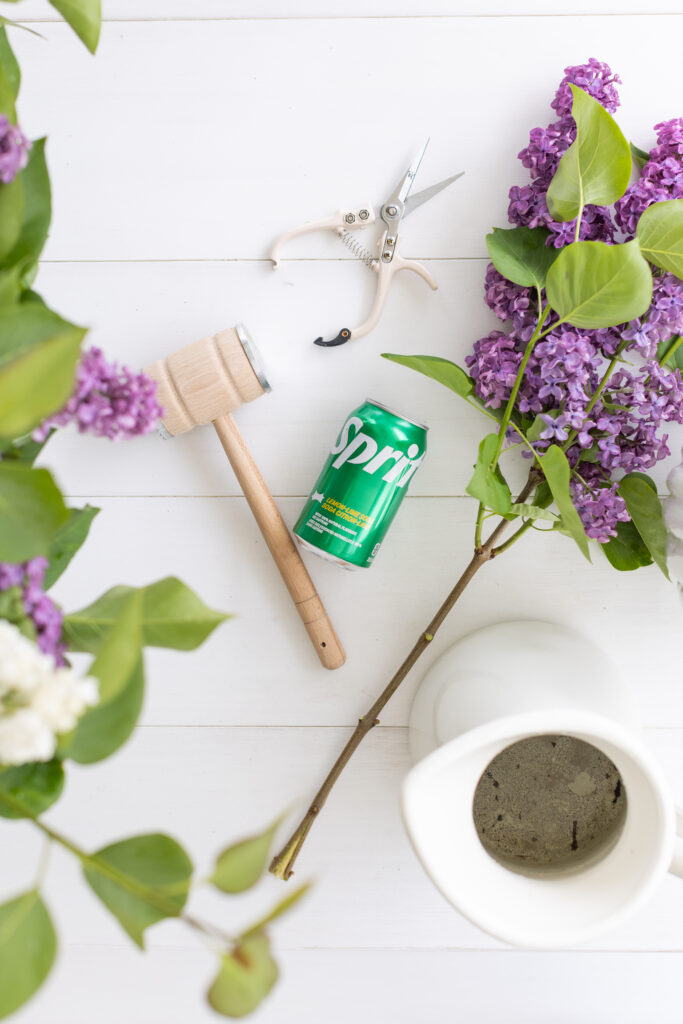
How Long do Lilacs Bloom For?
Lilacs may only bloom for 2-3 fleeting weeks, but they leave a lasting impression. Whether you’re planting your first shrub, pruning an old favourite, or simply filling your kitchen with their nostalgic scent that was a part of my own childhood.
Looking for more ways to bring the garden indoors? You can explore our seasonal decorating tips or check out the Fraîche at Home digital print shop for elegant kitchen and laundry prints and entertaining guides that bring beauty and function into your everyday.
More Garden Inspiration
Let’s keep the garden inspiration coming! Here are some other blogs you might enjoy:

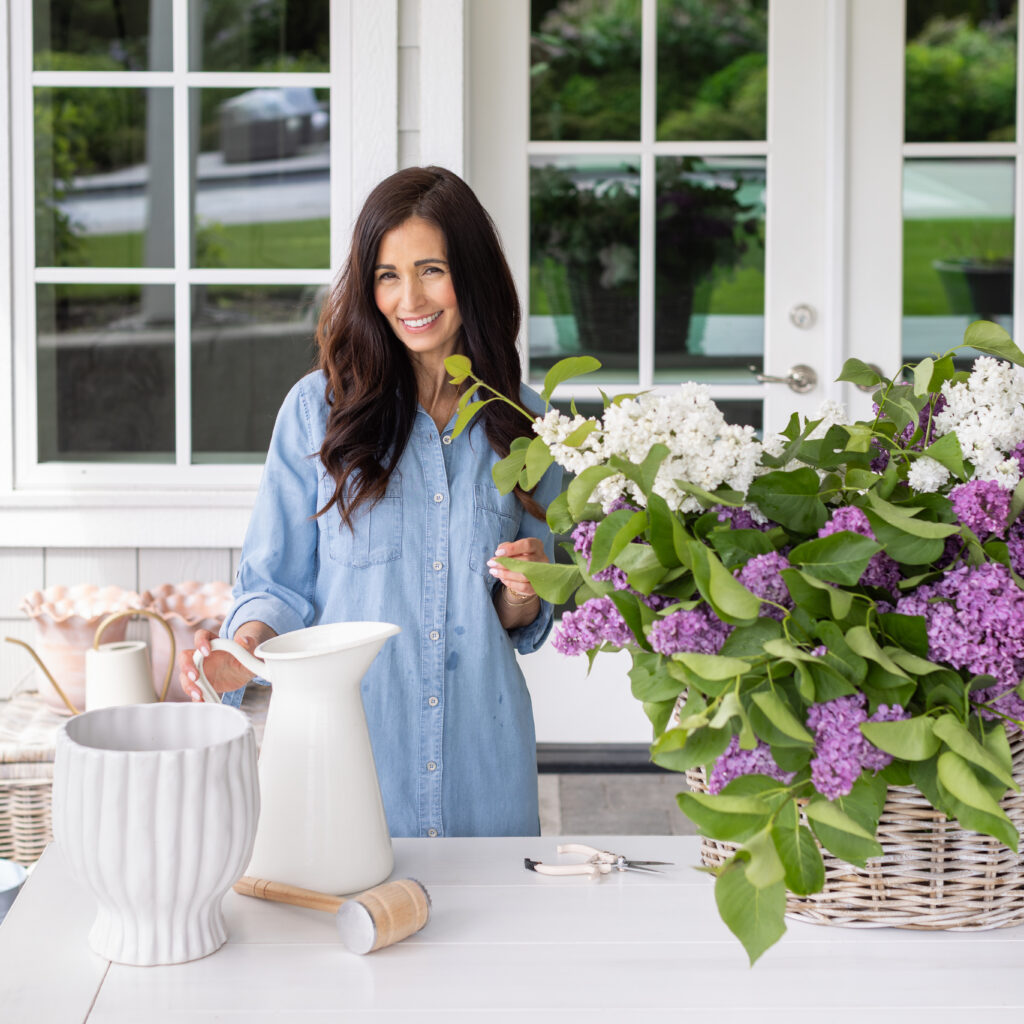
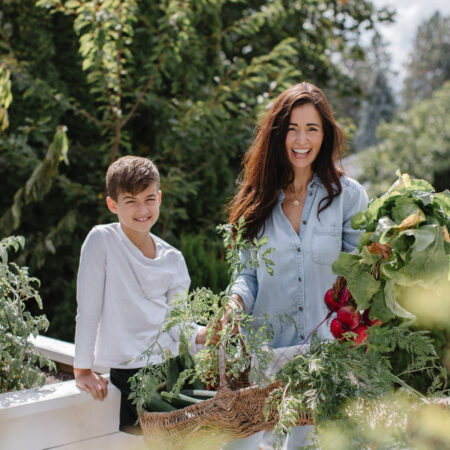
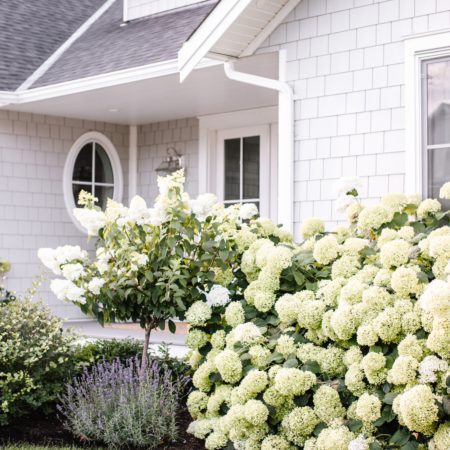


Thanks for the tips Tori, I open my family room window and the smell of lilacs fill the room, my favorite time of year. I love putting a vase of them on my dining room table and your tips will help keep them longer, thank you!
I love the look and smell of lilacs. After peonies they are my favourite flower.
Thank you for reminding me of the pleasure of growing these wonderful plants.
Unfortunately I now live in a condo so can’t have one. Sign me up if they ever develop a variety that will grow in a pot on a balcony 😁